#elizabethan history
Text
Although—once queen—Elizabeth is often accused of acting unfairly, even vindictively, towards all her royal cousins, Margaret was accorded great honour and kindness during the first twenty-two years of the reign.10 Elizabeth chose to have her cousin regularly in attendance upon her at court, ‘being nere in blood to us’, and Lady Strange usually bore the queen’s train during processions, while ‘all the other ladies followed in their degrees’. After Margaret had separated from her husband and was financially embarrassed, Elizabeth tried several times to help her out.
Elizabeth I and Her Circle, Susan Doran
43 notes
·
View notes
Text
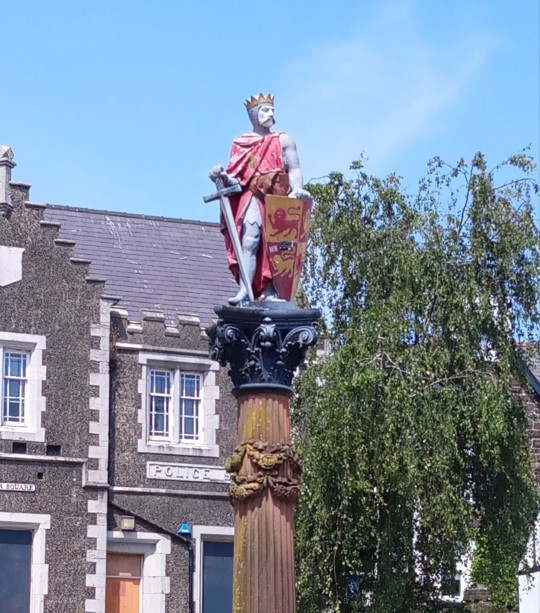
Day 3, continued some more.
King Llewellyn looking proud. I'm sure he has a Wikipedia page. He did some interesting things for Wales.

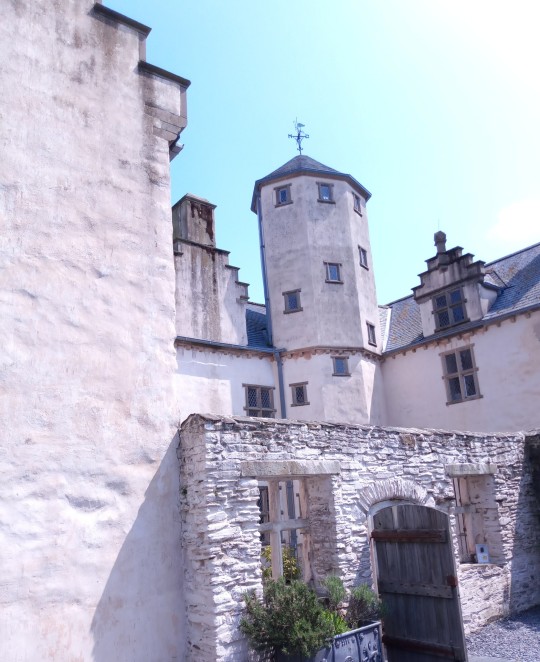
There is a beautifully preserved Elizabethan townhouse in Conwy, which is fabulous but a bit dull for me personally. It has a good reference to Kipling's poem Our Fathers of Old. As it turns out, people of 'old' did have a lot of wisdom of which we can learn a great deal from. Another great Kipling poem on the same general topic is The Gods of the Copybook Headings.
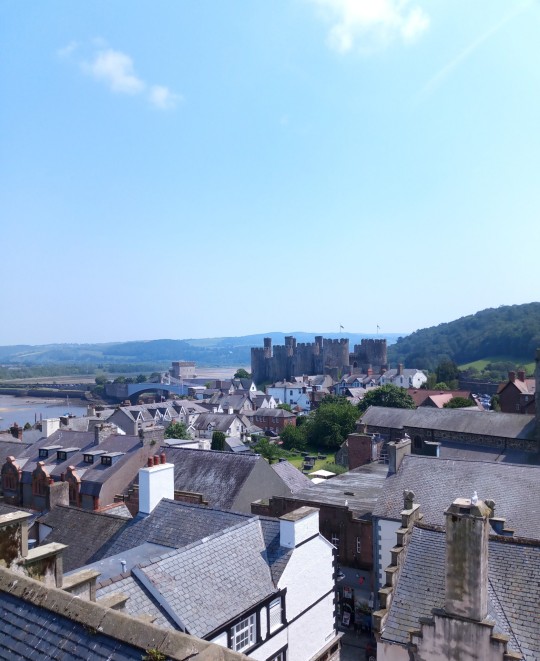
I did manage to snap a great picture of Conwy Castle from the top of the townhouse though.

The smallest house in GB. A tourist trap if I ever saw one!

Nice artworks at the culture centre. Bit of a ukiyo-e lite thing going on there.
0 notes
Text
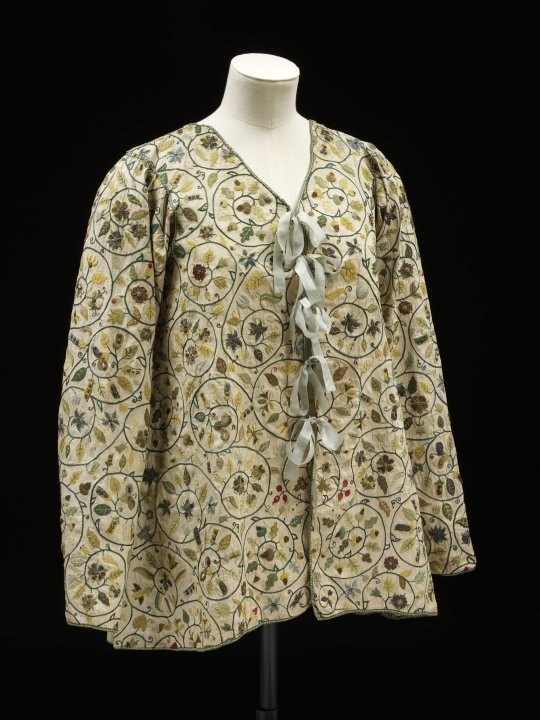
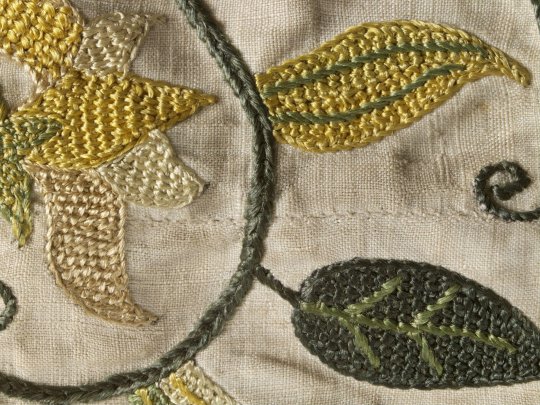
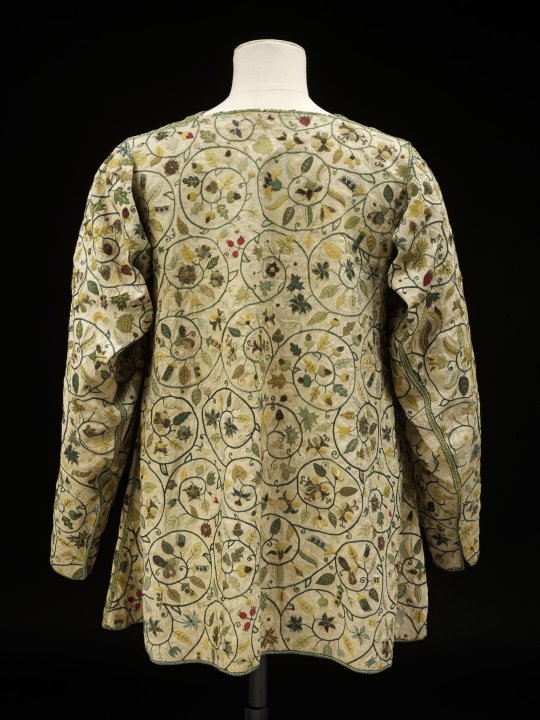
Jacket
1590-1630
Great Britain
This simple unlined jacket represents an informal style of clothing worn by women in the early 17th century. Unlike more fitted waistcoats, this loose, unshaped jacket may have been worn during pregnancy. A repeating pattern of curving scrolls covers the linen from which spring sweet peas, oak leaves, acorns, columbine, lilies, pansies, borage, hawthorn, strawberries and honeysuckle embroidered in coloured silks, silver and silver-gilt threads. The embroidery stitches include chain, stem, satin, dot and double-plait stitch, as well as knots and couching of the metal threads. Sleeves and sides are embroidered together with an insertion stitch in two shades of green instead of a conventionally sewn seam.
Although exquisitely worked, this jacket is crudely cut from a single layer of linen, indicating the work of a seamstress or embroiderer, someone without a tailor's training. It has no cuffs, collar or lining, and the sleeves are cut in one piece. The jacket was later altered to fit a thinner person. The sleeves were taken off, the armholes re-shaped, the sides cut down, and the sleeves set in again.
The Victoria & Albert Museum (Accession number: 919-1873)
#jacket#fashion history#historical fashion#17th century#1590s#1600s#1610s#1620s#elizabethan era#united kingdom#embroidery#16th century#v and a#love how they compliment the embroidery#and then roast the cutting lol
2K notes
·
View notes
Text
Okay so this is per Wikipedia so some stuff might be wrong but though our ancestors were very similar to us in fun ways, there are definitely some ways they were VERY DIFFERENT AND THINGS WERE NOT GOOD.
“Penelope Rich was considered one of the beauties of Elizabeth's court...Penelope is traditionally thought to have inspired Philip Sidney's sonnet sequence Astrophel and Stella (sometimes spelt Astrophil and Stella).“ https://en.wikipedia.org/wiki/Penelope_Blount,_Countess_of_Devonshire
Like okay, cool, Penelope was beautiful and inspired poetry. BUT-
“Returning to England in 1575, Sidney met Penelope Devereux (who would later marry Robert Rich, 1st Earl of Warwick). Although much younger, she would inspire his famous sonnet sequence of the 1580s, Astrophel and Stella. “ https://en.wikipedia.org/wiki/Philip_Sidney
‘Much younger’ is an understatement. In 1575 Sidney (born 1554) was 21 and Penelope Devreux, later Lady Penelope Rich (born 1563) was 12!!!! She was a child, how are you being inspired to write love poetry by a preteen. I am calling the police!!!
#Tudor History#elizabethan history#sir philip sidney#lady penelope rich#I know this was a long time ago and I should be used to this wack stuff by now but AHHHHHHH#dancing chopines thoughts
1 note
·
View note
Text
Alexander McQueen Fall 2013


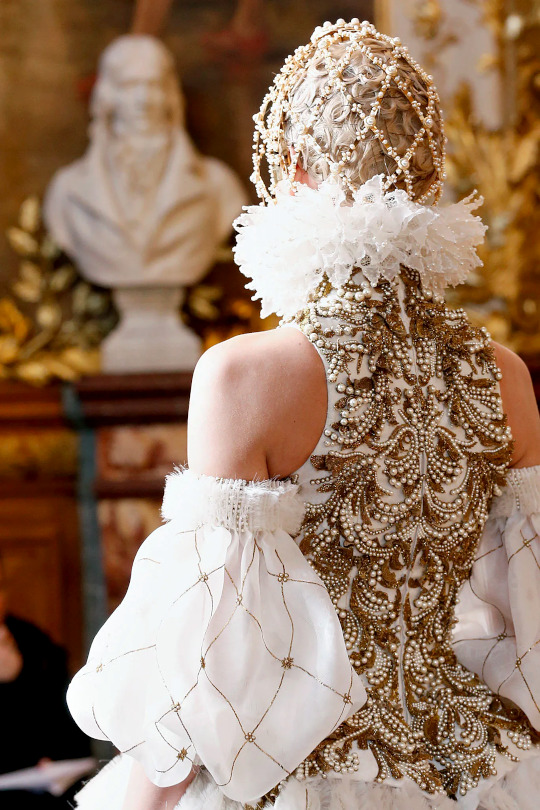



2K notes
·
View notes
Text

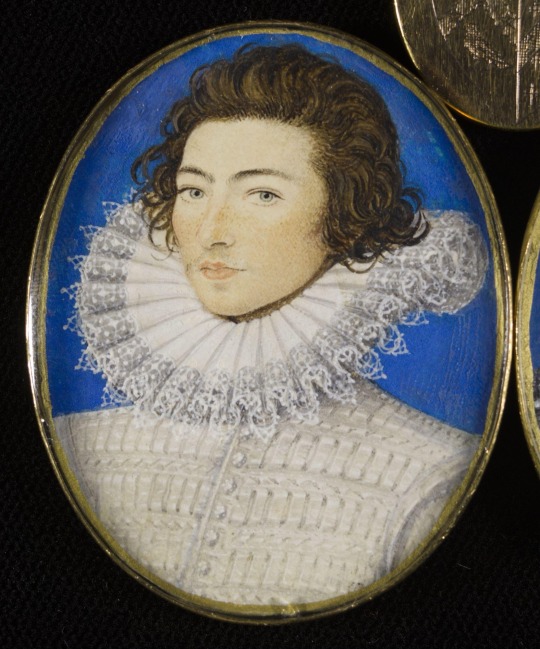

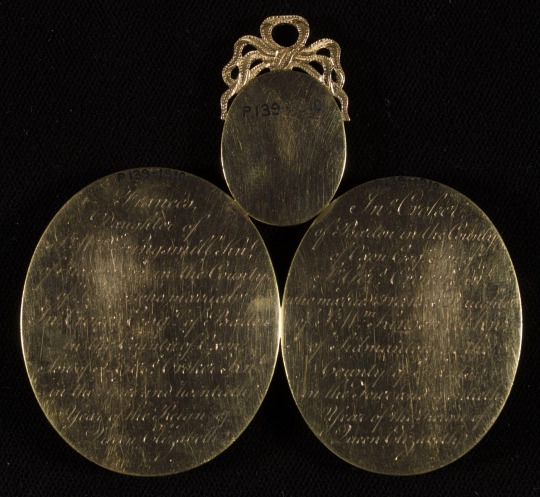
Miniature wedding portraits of Frances and John Croker of Barton by Nicolas Hilliard, circa 1581.
#freckles#early modern#early modern era#early modern period#english renaissance#english#renaissance#cool#portraits#portrait#painting#paintings#wedding#romance#love#couple#marriage#romantic#pretty#handsome#aesthetic#academia#history#fashion history#fashion#style#interesting#nicolas hilliard#elizabethan#tudor
241 notes
·
View notes
Note
I've seen a post you've reblogged and added to, among many things about women showing nipples. Can you recommend any ref material (articles, videos, etc.) are share your knowledge about this? Cause I'm curious about that, as nowadays going out in a shirt without a bra makes you indecent, while in like 90s it was okayish? I wonder how it was in previous centuries.
There is a really cool academic paper about bare breast dresses in 17th century England specifically. I think anyone can read it by creating a free account.
Abby Cox also has a good video about the cleavage during the past 500 years in which she goes through also the nip slip phenomena.
I don't have other sources that specifically focus on this subject, though many sources about specific decades touch on it, but I do have my primary source image collection, so I can sum up the history of the bare nipple.
So my findings from primary source images (I could be wrong and maybe I just haven't found earlier examples) is that the Venetians were the first ones to show the nipple for courtly fashion. At the same time in other places in Europe they sported the early Elizabethan no-boob style that completely covered and flattened the chest. In the other corners of Italy the necklines were also low but less extreme. Venetian kirtle necklines dropped extremely low as early as 1560s and they combined extremely sheer, basically see-through partlets with their kirtle. First example below is a 1565-70 portrait of a Venetian lady with the nipples just barely covered waiting slip into view with a movement of arm. There was an even more extreme version of this with the kirtle being literally underboob style, still with a sheer doublet. Though I believe this was not quite for the respectable ladies, since I have only seen it depicted on high class courtesans. They were not exactly respectable ladies, but they did have quite good social position. The second example is a 1570s depiction of a courtesan, which is revealed by the horned hairstyle. By the end of the century this underbust style with only see through fabric covering breasts, had become respectable. In the last example it's shown on the wife of the Venetian doge in 1597.
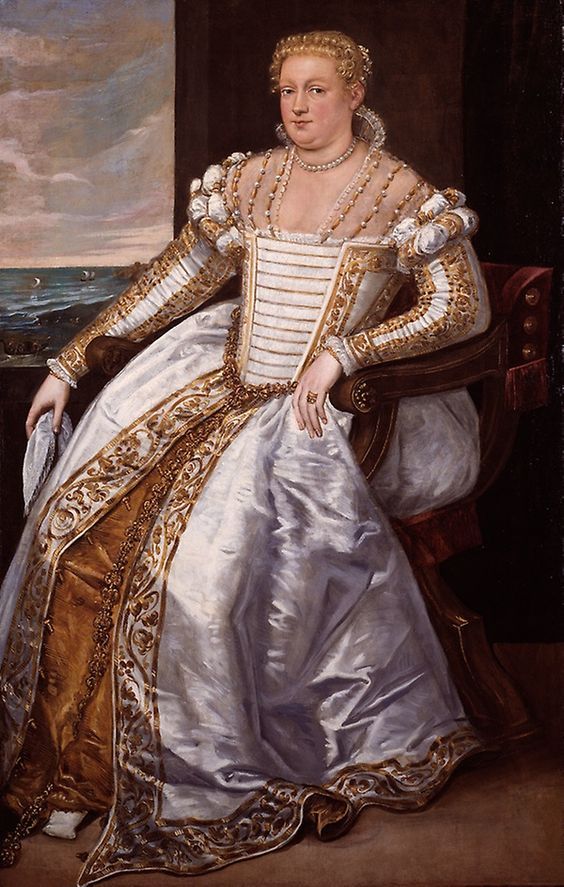
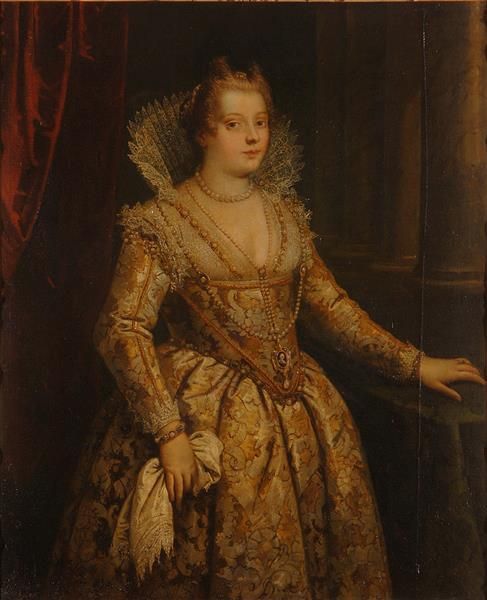

Around the same time, at the very end of 1500s, the extremely low cut bodice fashion enters rest of Europe. The low cut style was present in the bodices of all classes, but the nipple was really only an aristocrat thing. The lower classes would cover their breasts with a partlet, that was not sheer. Bare breast was ironically from our perspective a show of innocence, youthful beauty and virtue, and to pull off the style with respect, you also had to embody those ideals. Lower class women were considered inherently vulgar and lacking virtue, so a nipple in their case was seen as indecent. Bare boobs were also a sort of status symbol, since the upper class would hire wet nurses to breastfeed their children so they could show of their youthful boobs.
Covering partlets and bodices were still also used in the first decade of 1600s by nobles and the nip slip was mostly reserved for the courtly events. The first image below is an early example of English extremely low neckline that certainly couldn't contain boobs even with a bit of movement from 1597. The 1610s started around 5 decades of fashion that showed the whole boob. The first three were the most extreme. Here's some highlights: The second image is from 1619.
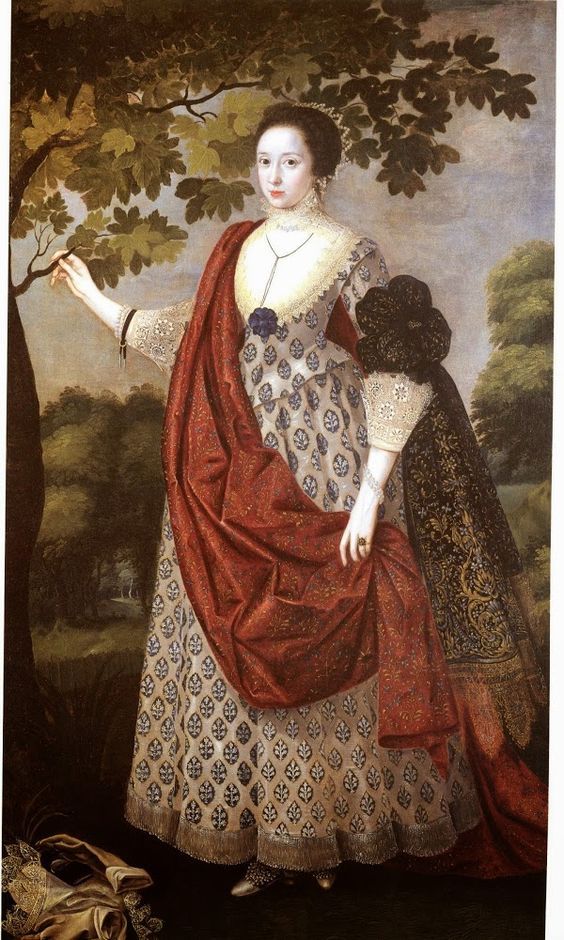

Here the first, very much showing nipples, from c. 1630. The second from 1632.
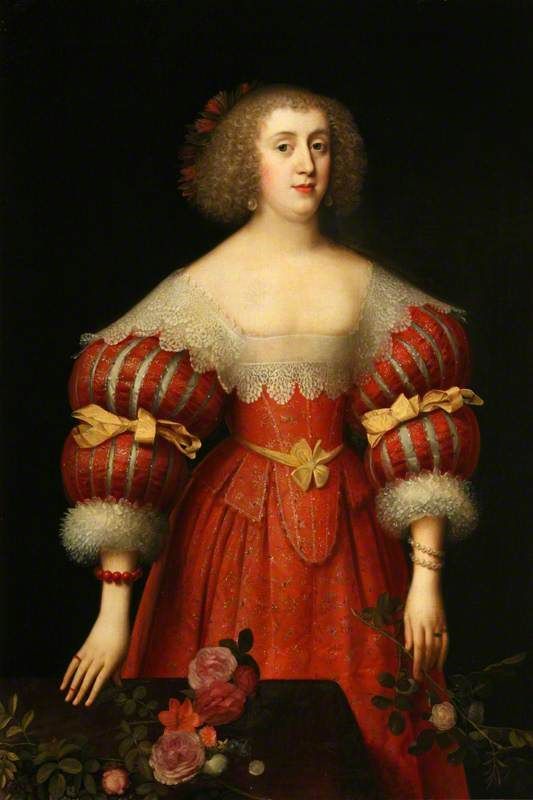
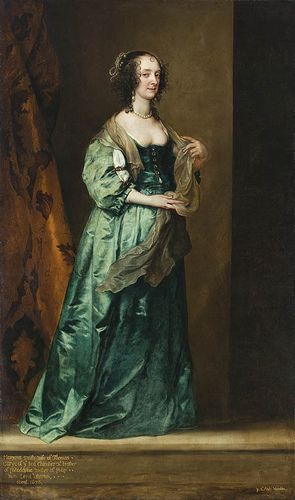
The neckline would slowly and slightly rise during the next decades, but nip slips were still expected. Here's an example from 1649 and then from 1650-55. In 1660s the neckline would get still slightly higher and by 1870s it was in a not very slippable hight. The necklines would stay low for the next century, though mostly not in boob showing territory, but we'll get there. But I will say that covering the neckline in casual context was expected. Boobs were mostly for fancy occasions. It was considered vain to show off your boobs when the occasion didn't call for it and covering up during the day was necessary for a respectable lady. You wouldn't want to have tan in your milk-white skin like a poor, and also they didn't have sun screen so burning was a reasonable concern.

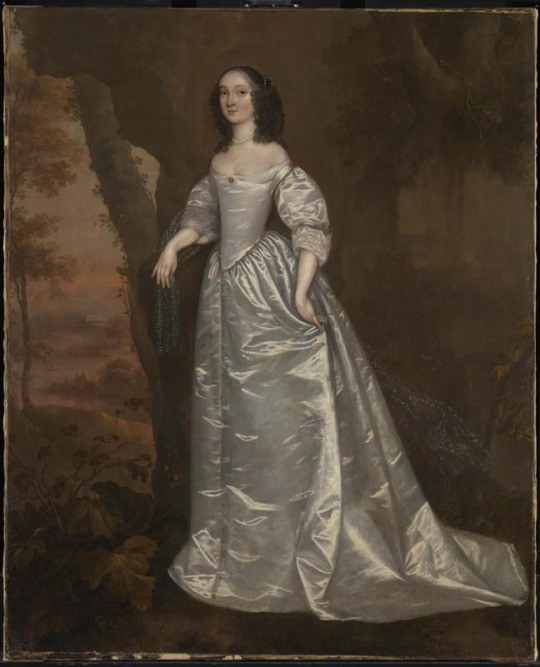
1720s to 1740s saw necklines that went to the nip slip territory, though they didn't go quite as low as 100 years earlier. The nipple was present in the French courtly fashion especially and rouging your nipples to enhance them was popular. Émilie Du Châtelet (1706-1749), who was an accomplished physicist and made contributions to Newtonian mechanics, was known in the French court to show off her boobies. An icon. Here she is in 1748. Here's another example from this era from 1728.
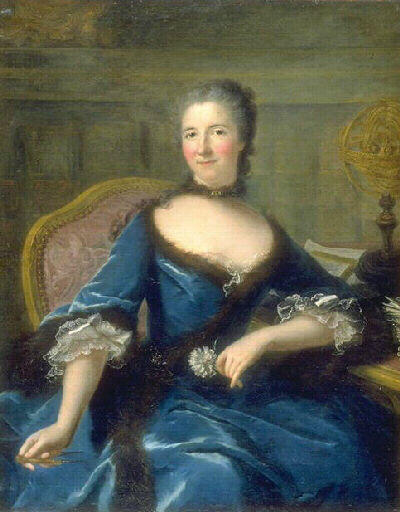
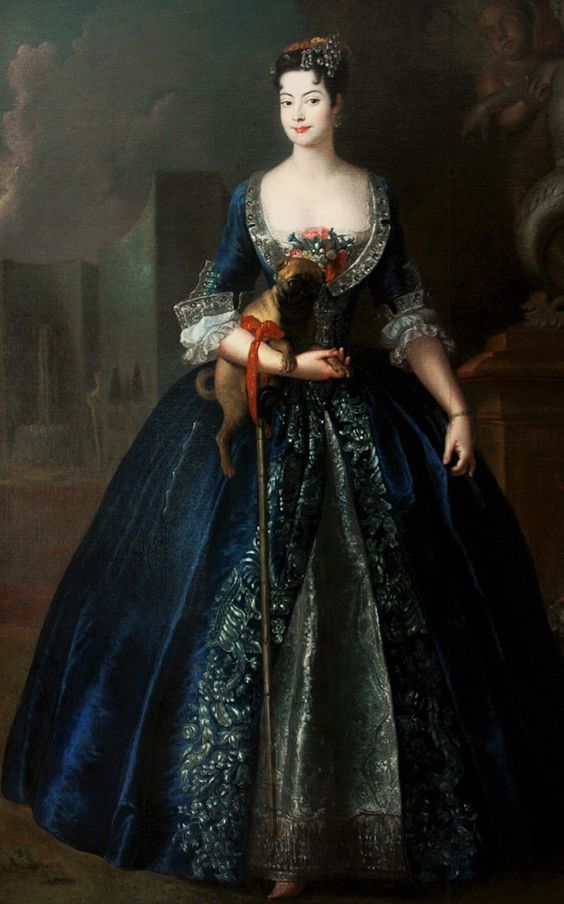
The Rococo neckline never got high, but in the middle of the century it was less low till 1770s when it plunged into new lows. In 1770s the fashion reached a saturation point, when everything was the most. This included boobs. The most boob visible. There was a change in the attitudes though. The visible boob was not a scandal, but it was risque, instead of sing of innocent and did cause offense in certain circles. I think it's because of the French revolution values gaining momentum. I talked about this in length in another post, mostly in context of masculinity, but till that point femininity and masculinity had been mostly reserved for the aristocracy. Gender performance was mostly performance of wealth. The revolutionaries constructed new masculinity and femininity, which laid the groundwork for the modern gender, in opposition to the aristocracy and their decadence. The new femininity was decent, moral and motherly, an early version of the Victorian angel of the house. The boob was present in the revolutionary imagery, but in an abstract presentation. I can't say for sure, but I think bare breasts became indecent because it was specifically fashion of the indecent French aristocracy.
Here's example somewhere from the decade and another from 1778. The neckline stayed quite low for the 1780s, but rose to cover the boobs for the 1790s.

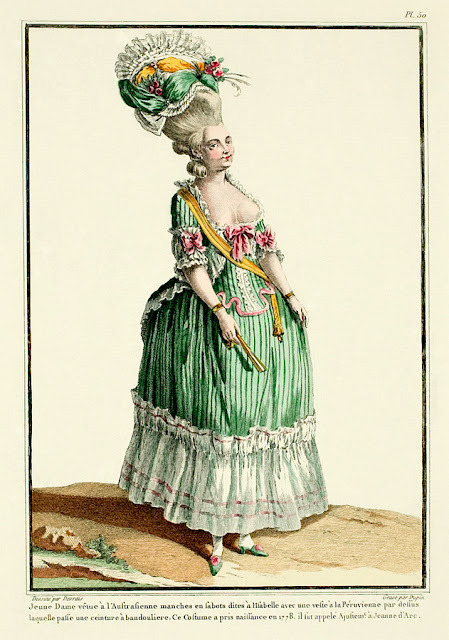
The nipple didn't stay hidden for long but made a quick comeback in the Regency evening fashion. It was somewhat scandalous by this point, and the nipple and sheer fabrics of the Regency fashion gained much scorn and satire. The styles that were in the high danger nip slip territory and those that allowed the nipple to show through fabric, were still quite popular. The sleeves had been mid length for two centuries, but in 1790s they had made a split between evening and day wear. The evening sleeves were tiny, just covering the shoulder. Showing that would have been a little too much. Like a bare boob? A risque choice but fine. A shoulder? Straight to the horny jail. (I'm joking they did have sheer sleeves and sometimes portraits with exposed shoulder.) But long sleeves became the standard part of the day wear. Getting sun was still not acceptable for the same reasonable and unreasonable reasons. Day dresses did also usually have higher necklines or were at least worn with a chemisette to cover the neckline. Fine Indian muslin was a huge trend. It was extremely sheer and used in multiple layers to build up some cover. There were claims that a gust of wind would render the ladies practically naked, though because they were wearing their underclothing including a shift, which certainly wasn't made from the very expensive muslin, I'm guessing this was an exaggeration. Especially though in the first decade, short underboob stays were fairly popular, so combined with a muslin, nipples were seen. Here's an early 1798 example of exactly that. The short stays did disappear eventually, but in 1810s the extremely small bodices did provide nip slip opportunities, as seen in this 1811 fashion plate.
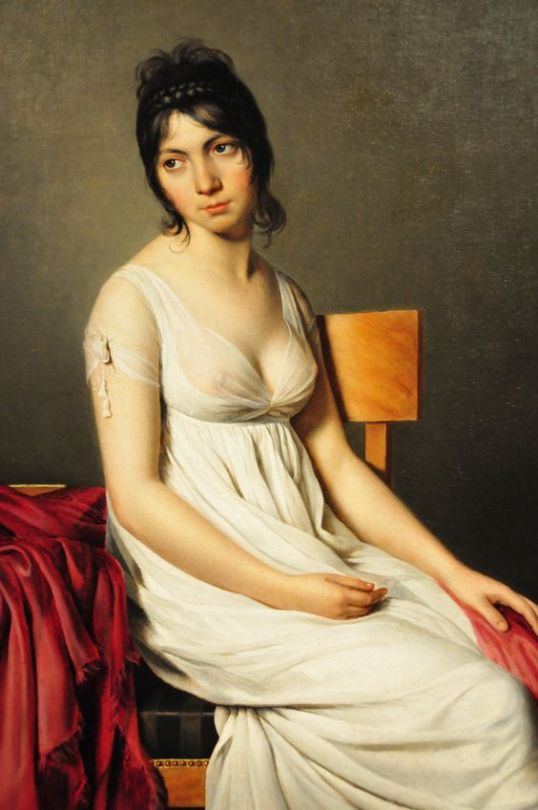
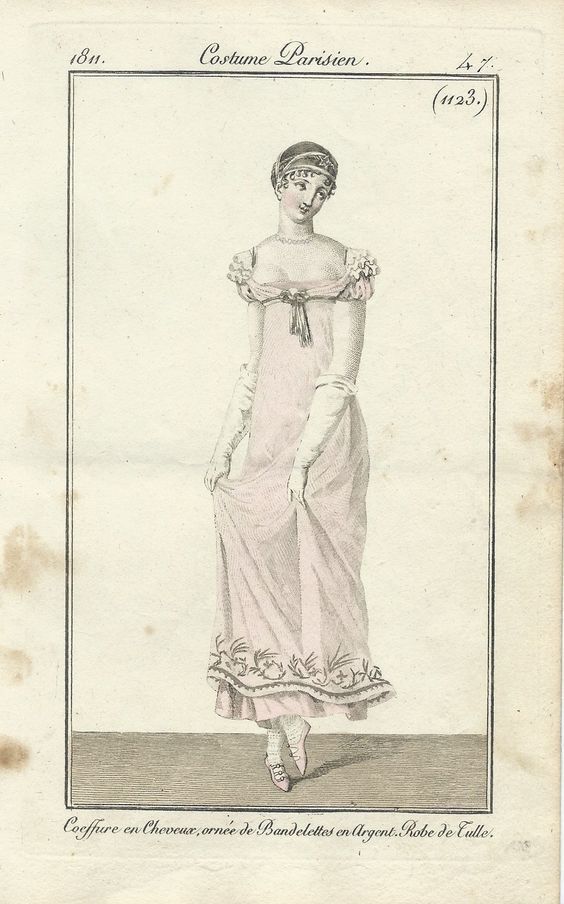
Victorian moralizing did fully kill the nip slip, though at least they were gender neutral about it. The male nipple was just as offensive to them. In 1890s, when bodybuilding became a big thing, bodybuilder men were arrested for public indecency for not wearing a shirt.
#there was also the new femininity aspect to regency nipple which had to do with breastfeeding becoming fashionable among upper class#it's about the whole motherly thing that came with the french revolution#i can't remember the book i read it from so i didn't go into it because i couldn't remember the details lol#but it did definitely have an effect to the fashion and to the perception of nipple#historical fashion#fashion history#history#dress history#fashion#answers#painting#fashion plate#renaissance fashion#elizabethan fashion#rococo fashion#baroque fashion#regency fashion#will tumblr prove itself to be again more prudish than elizabethans and label my post as mature content?#remains to be seen
519 notes
·
View notes
Text
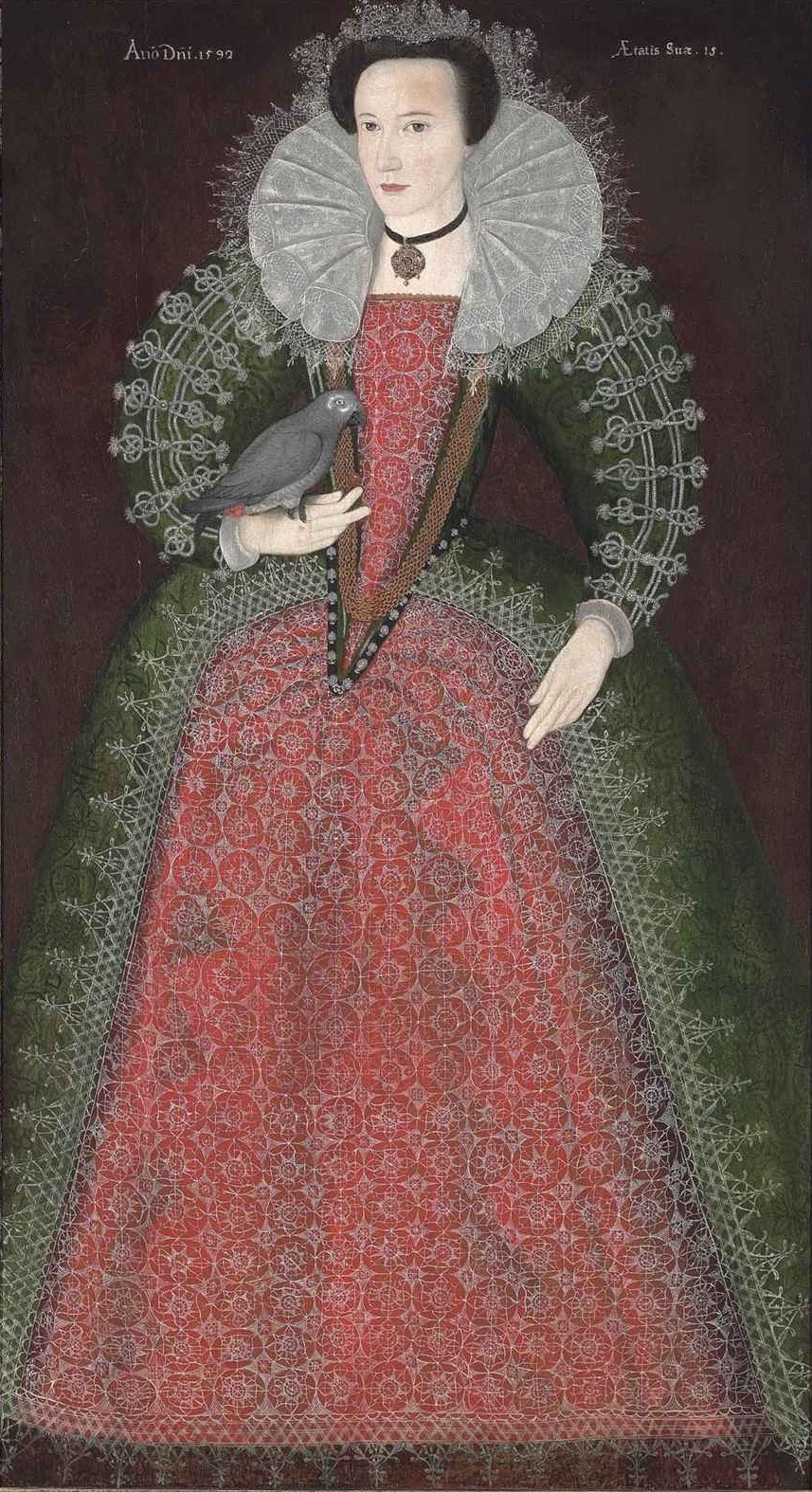
Portrait of a Lady with a Parrot, unknown artist (English School), 1592
#art#art history#English School#portrait#portrait painting#Tudor England#Elizabethan England#English Renaissance#English art#16th century art#oil on panel
155 notes
·
View notes
Text

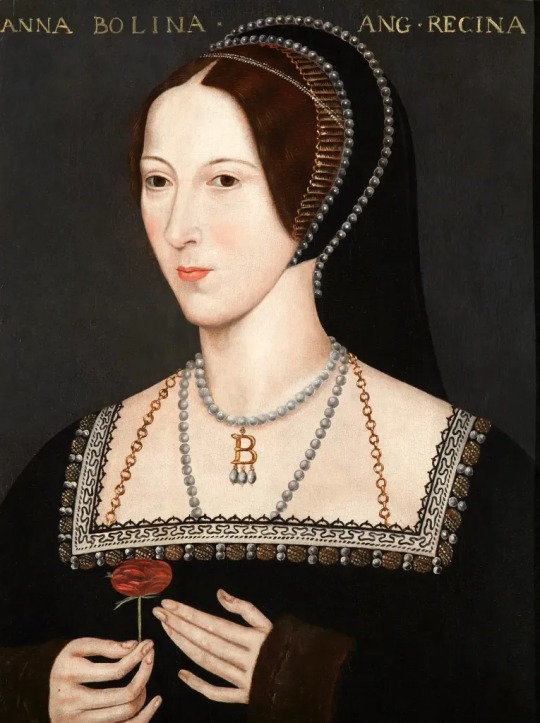
The Hever Castle Rose Portrait of Anne Boleyn: Before and After Restoration
#anne boleyn#queen anne boleyn#anna bolina#anna bolena#tudor history#henry viii#the tudors#english history#tudor era#art history#british history#history of art#renaissance art#renaissance#16th century art#16th century#sixteenth century#the six wives of henry viii#art restoration#elizabethan england#hever castle#Elizabeth I#art#portraits#tudor rose#tudor england#tudor period#house of tudor#tudor dynasty#elizabethan
98 notes
·
View notes
Photo
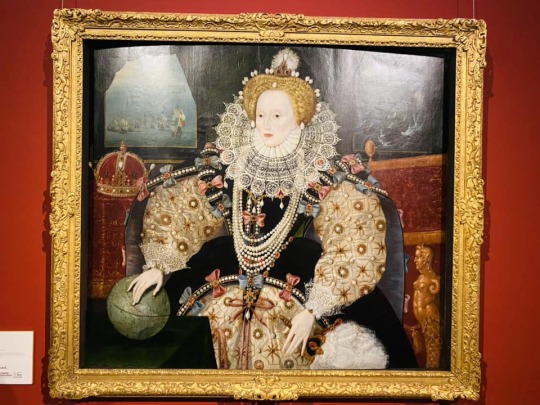

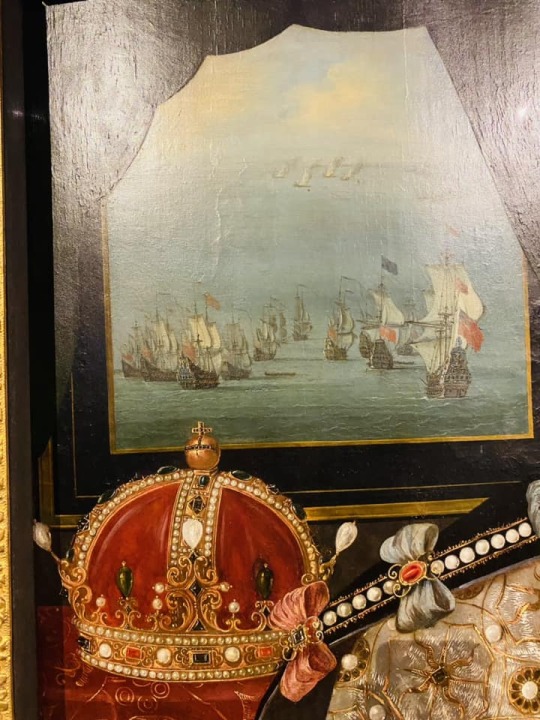

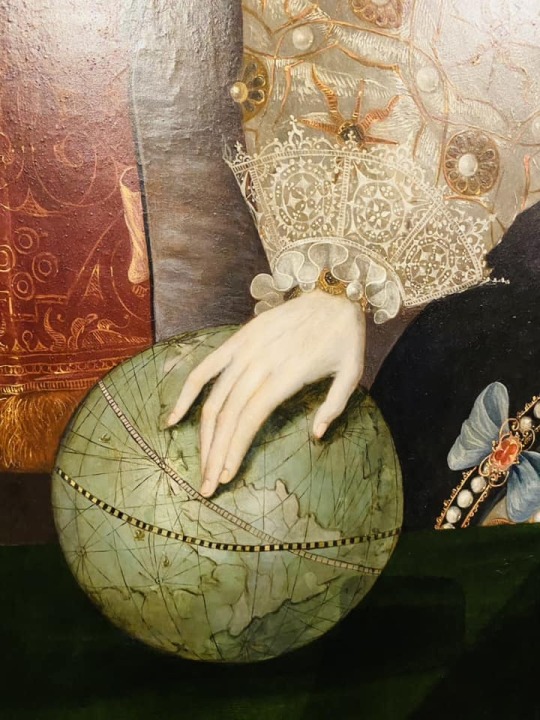
That weird historian thing where you see certain portraits so much in books/TV/online that you sort of forget they're actually real things that exist in the world. Saw the "Armada Portrait" of Elizabeth I in person in Greenwich last month.
#elizabeth i#elizabethan#history#tudor#tudors#the tudors#spanish armada#the spanish armada#16th century#naval history#tall ships#royal
153 notes
·
View notes
Photo
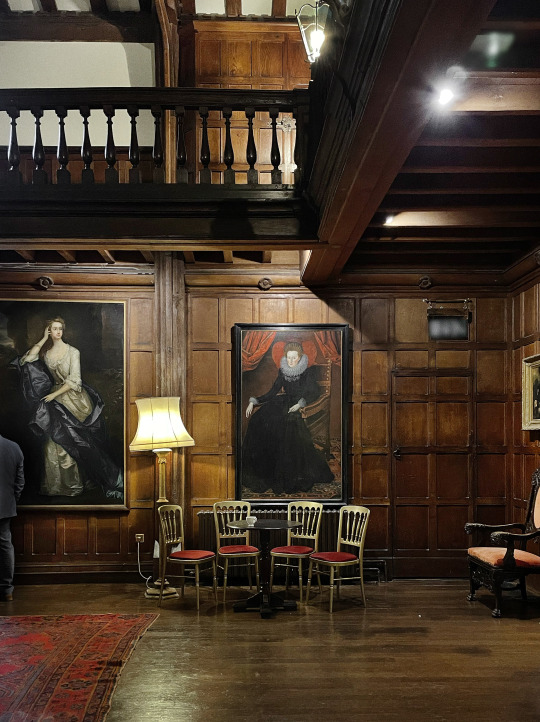
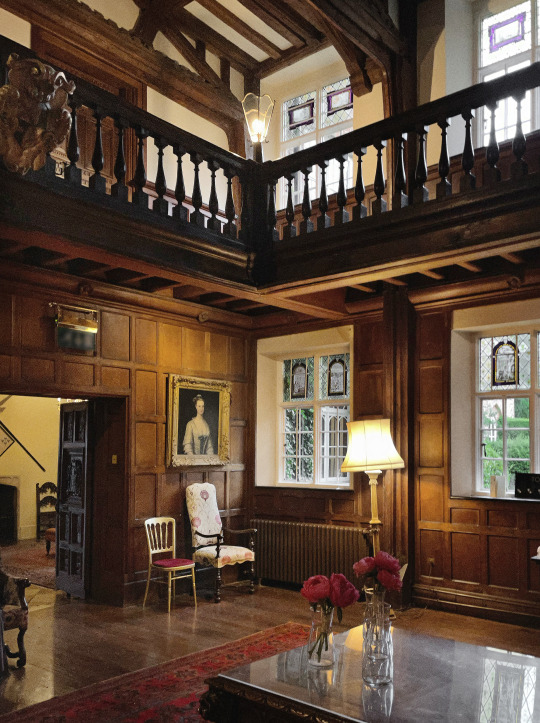
Spent the weekend at the most gorgeous wedding, felt like I was in The Favourite (2018), 10/10 for these 16th century vibes
#travel#travelblr#architecture#interiors#countryside#england#south england#hampden#hampden house#the favourite#the favorite#elizabethan#history#dark academia#academia#neutral tones
1K notes
·
View notes
Text
While Elizabeth often started her letters to Roe with the salutation ‘honest, fat Tom’, she teasingly addressed another ambassador, John Hay, earl of Carlisle, as ‘ugly, filthy camel’s face’
Clare Jackson, Devil-Land: England Under Siege
33 notes
·
View notes
Text
What Rhaenyra Targaryen would have worn...
(TUDOR PERIOD)


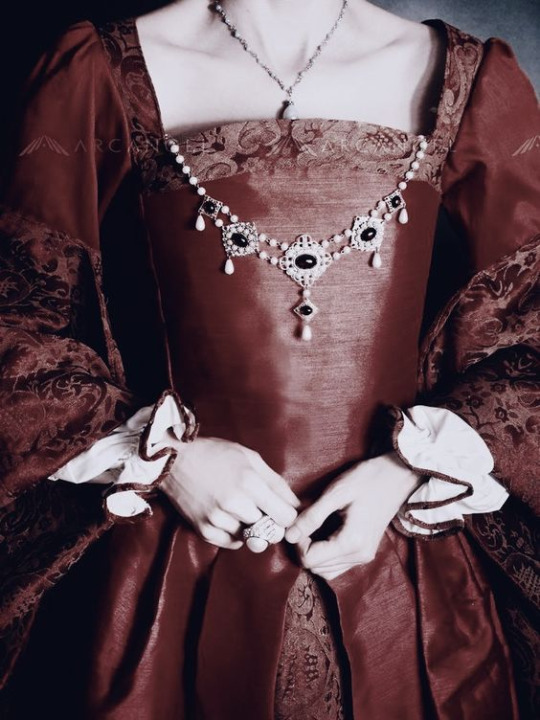

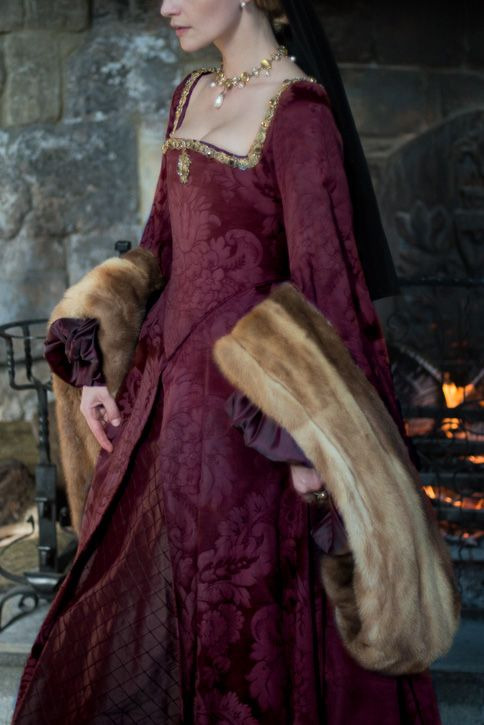

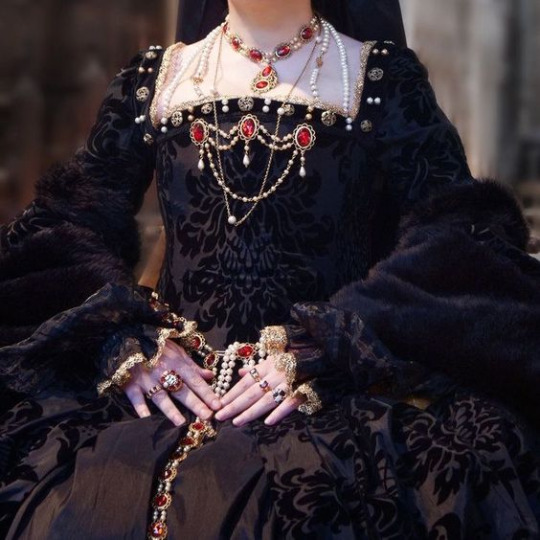
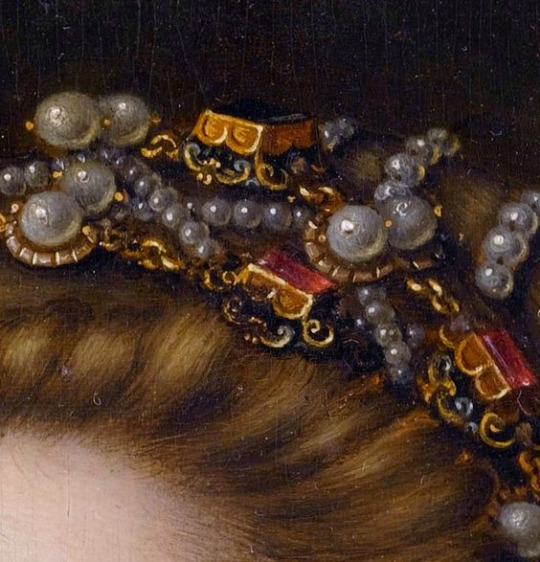

#hotd#house of the dragon#rhaenyra targaryen#the dance of the dragons#asoiaf#asoif/got#pre asoiaf#tudor era#tudor period#tudor fashion#elizabethan era#elizabethan fashion#elizabethan#history#fantasy#team black
87 notes
·
View notes
Text
alvaro de la quadra reporting to the bishop of arras that elizabeth didn’t go through with her meeting on april 8 so she could watch robert dudley play tennis (1560 colorized)

#couldn’t help it lmfao#tudor memes#history memes#elizabethan memes#elizabeth tudor#robert dudley#elizabeth x robert#historical memes#the tudors#english history
39 notes
·
View notes
Text

Behbeh
#elizabethan#collar#olden times#shakespeare#fashion#english#neck ruff#lewk#cartoon#teddy bear#illustration#dailybehbeh#behbeh#cute#fashion history#comedy#art#funny#daiy#daily bear#polar bear#stuffed animal
20 notes
·
View notes
Text

French Lady Barbie, from the 1997 Great Eras Collection
It's France in the early 1800's and the name Napoleon Bonaparte is on everyone's lips. Self-proclaimed emperor in 1804, he and his beautiful wife Josephine are the leaders of French style and fashion.
French Lady™ Barbie® pays heed to the dictates of the famous emperor. Her gown is all the latest rage in Napoleon's court. Its empire styling mimics the elongated elegance of a classical Greek column, a time and period most admired by Napoleon. Its predominant color is French blue, a color much favored by everyone royal in France. The underskirt is dotted with golden Fleur-de-Lis, a long-lived symbol of French royalty.
Women of the era wore high heels on tiny feet, and often had a pair made to match every outfit. French Lady Barbie has hair gathered into a golden headpiece and her lovely face is trimmed in tiny chestnut curls. Her skin is fair, her eyelashes rooted, while her faux turquoise jewelry complements the French Blue of her gown.
Napoleon had an effect on more than fashion and style. He gave France a civil code, religious tolerance and fair taxes. During his reign, the Bank of France was founded and France enjoyed freedom of the press, rare in its long history.
While Napoleon led French armies in conquest, the beautiful, brooding music of composer Ludwig van Beethoven was heard throughout Europe. In France, artist J. L. David achieved fame and popularity as did portaitist Jean Ingres. In 1806, the Institut de France was created by combining Academie Francaise with other academies, all designed to protect and promote everything French, from art to architecture! The beautiful city of Paris began to take form and shape as the famous landmark, the Arc de Triomphe by artist Claude Clodion, was begun in 1806 and completed in 1836.
Rarely in history has one nation ever commanded so much prestige, so much success and so much style. In this magical age of Napoleon, everything the French touched rang with glory. French Lady Barbie captures this glory in her brilliance of style and sophistication. It's not difficult to close one's eyes and imagine her gracing the balls of Paris, with the cry of Vive la France, ringing in her ears.
#have i ever mentioned (and yes i have) that i am obsessed w the great eras collection#medieval lady and elizabethan queen are my top 2#i love grecian goddess too#im posting french lady bc i searched it on here and there were no doll blogs who had posted it for me to reblog#i know im a treasure to the community you dont have to thank me#barbie#dolls#barbie dolls#great eras collection#90s barbie#french history#napoleonic era#dollblr#what id give to touch her little poofy sleeves. uughghghghgh#THAT MATERIAL LOOKS SO SOFT IM OBSESSED
68 notes
·
View notes